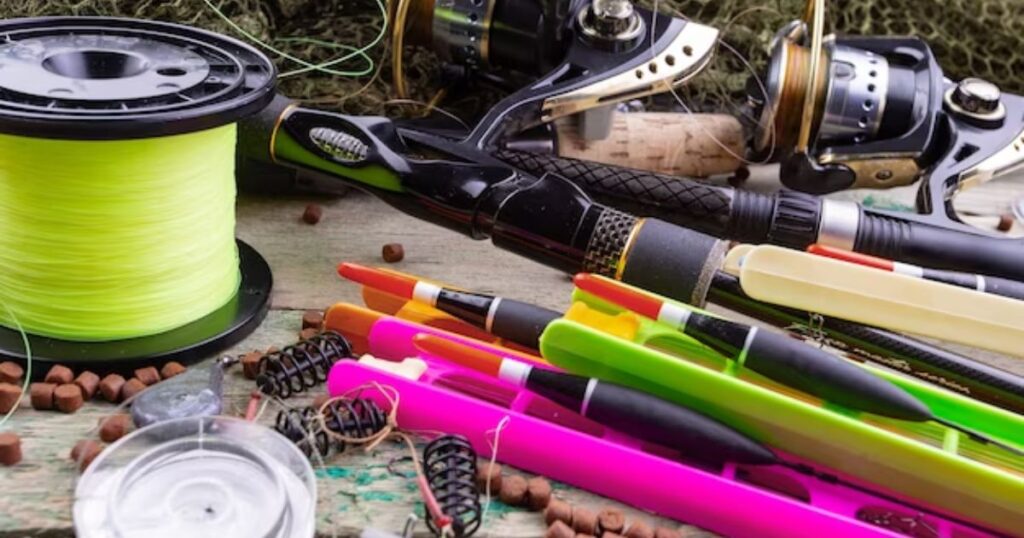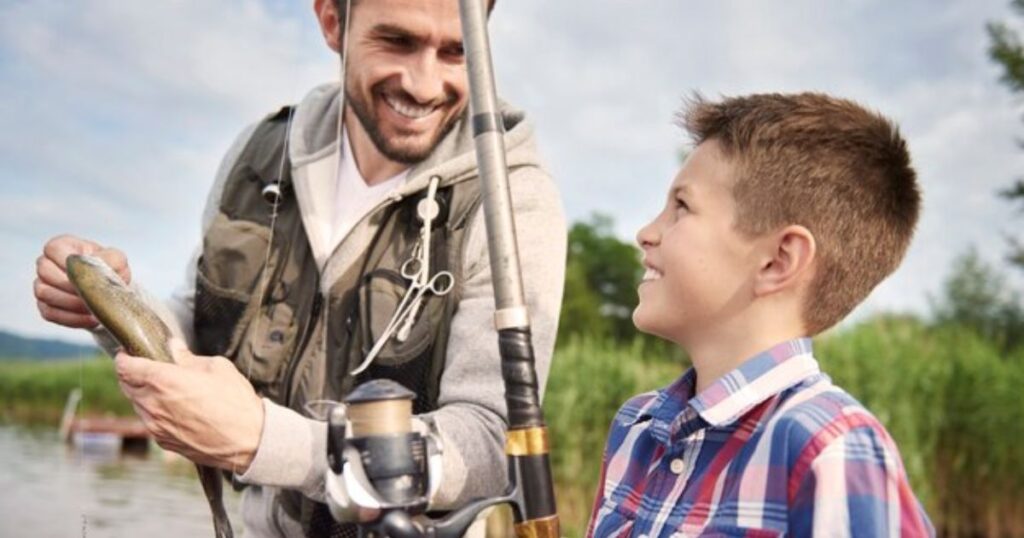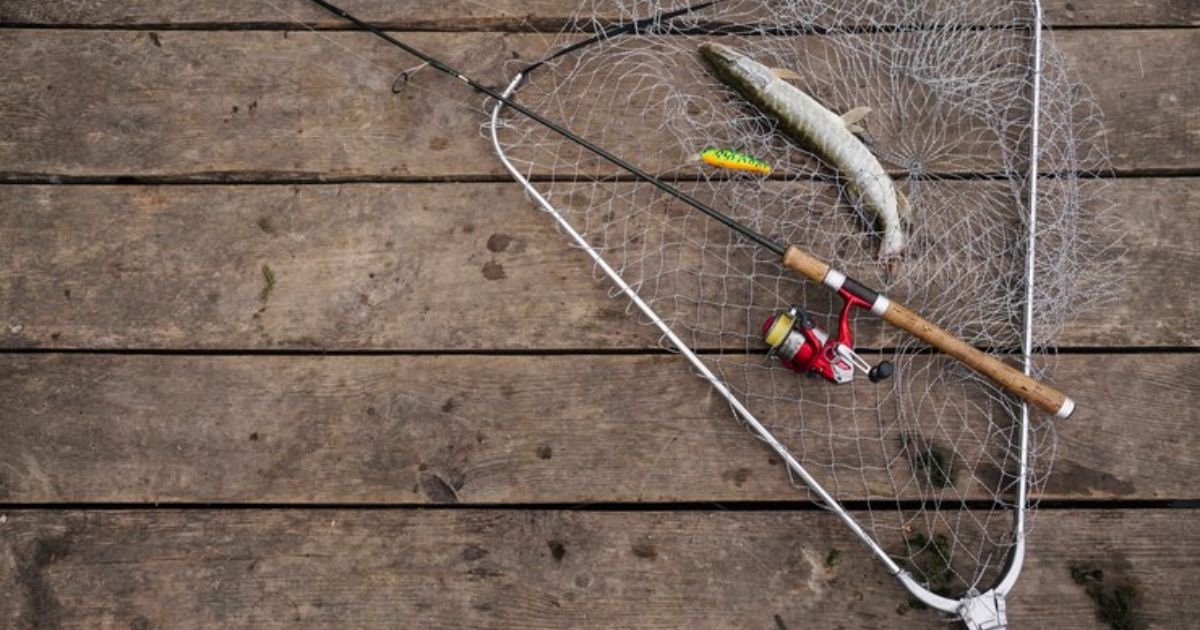When it comes to selecting the appropriate pound test braid for your baitcaster, understanding the factors at play becomes crucial. Fishing enthusiasts and professionals alike strive to find the right balance between strength and sensitivity, ensuring optimal performance in their pursuit of various species. In this guide, we will delve into the intricacies of choosing the right pound test braid for your baitcaster.
By considering factors such as target species, fishing conditions, and the benefits and drawbacks of lighter or heavier pound test braids, you will gain valuable insights into making informed decisions. With our tips and recommendations, you will be equipped to select the most suitable pound test braid for different fishing situations, enhancing your angling experience and increasing your chances of success.
Key Takeaways
- Using a lighter pound test braid on a baitcaster can result in increased casting distance, improved sensitivity, better lure action, and reduced visibility.
- The recommended pound test for a baitcaster depends on the fishing situation, such as deep sea trolling, freshwater finesse fishing, or heavy cover flipping.
- Factors to consider when selecting the pound test braid for a baitcaster include the type of fish being targeted, size of bait or lure, fishing conditions, and personal preference.
- Proper spooling of braid on a baitcaster is important to prevent line tangles or backlash and enhance fishing performance.
Understanding Braid Pound Test
The braid pound test, indicated by a numerical value, measures the strength and durability of the fishing line used on a baitcaster. Understanding braid strength is crucial for anglers who want to ensure they have the right line for their fishing needs, with the “best line for a baitcaster” being a consideration. The pound test refers to the amount of weight the line can withstand before breaking, and a higher pound test indicates a stronger line that can handle heavier fish and more challenging fishing conditions.
The importance of line visibility should also be considered when choosing a braid pound test. A highly visible line can help anglers detect subtle bites and improve their chances of hooking a fish. Conversely, a less visible line may be preferred in situations where fish are easily spooked. Overall, understanding the braid pound test and considering line visibility are important factors in selecting the right fishing line for a baitcaster.
Factors to Consider for Baitcaster Braid

When selecting the appropriate lb braid for a baitcaster, there are several crucial factors that need to be taken into consideration. These factors will help determine the ideal pound test for your specific fishing needs. Here are four key factors to consider when choosing braid for your baitcaster:
- Target Species: Different fish species have varying levels of strength and aggression. Considering the size and fighting power of your target species will help determine the pound test needed to handle their resistance.
- Fishing Conditions: Factors such as water clarity, structure, and cover can impact your fishing experience. Lighter pound test braid offers better sensitivity and casting distance, making it ideal for clear water and open areas. Heavier pound test braid is better suited for fishing in heavy cover and structure.
- Casting Distance: Lighter pound test braid allows for longer casts due to its thinner diameter. This can be beneficial when targeting fish in open water or when trying to reach distant targets.
- Line Capacity: Consider the line capacity of your baitcaster reel. Lighter pound test braid takes up less space on the spool, allowing for more line capacity and reducing the chances of spool overrun.
Matching Braid Pound Test to Target Species
When matching the pound test of your braid to the target species, it is important to consider the optimal pound test for the specific fish you are targeting. Different species have different strength and fighting abilities, so using the appropriate pound test will ensure that you have enough strength to handle the fish without sacrificing sensitivity or casting distance. Additionally, factors such as the fishing environment and the size of the fish should also be taken into account when determining the pound test of your braid.
Optimal Pound Test
To ensure optimal performance and maximize your chances of success, it is crucial to match the pound test of your braid to the specific target species when using a baitcaster. Choosing the right pound test is essential for several reasons:
- Factors for selecting braid: Understanding the habitat, behavior, and size of the target species will help determine the appropriate pound test. Larger, stronger fish may require heavier pound test to withstand their power and prevent line breakage.
- Advantages of lighter braid: Using a lighter pound test can offer several advantages, such as increased sensitivity and longer casting distance. It also allows for better lure presentation and enhances the overall fishing experience.
- Enhanced finesse and sensitivity: Lighter pound test braid allows you to feel even the slightest nibble or bite, giving you an advantage when finesse fishing for species like trout or panfish.
- Adjusting for water conditions: Depending on the clarity and depth of the water, you may need to adjust the pound test of your braid. Clear and shallow water may require lighter pound test, while murky or deep water may necessitate heavier pound test.
Target Species Considerations
The selection of the appropriate pound test for your braid on a baitcaster should be based on the target species’ characteristics and requirements. Factors to consider include the size and strength of the fish you are targeting, as well as the fishing conditions and techniques you will be using. It is important to match the pound test of your braid to the target species’ size to ensure that you have enough strength to handle the fish without risking breakage.
To help you make an informed decision, here is a table that provides a general guideline for matching braid pound test to target species size:
| Target Species Size | Recommended Pound Test |
|---|---|
| Small fish (under 10 lbs) | 6-10 lb |
| Medium fish (10-30 lbs) | 12-20 lb |
| Large fish (30+ lbs) | 30+ lb |
Remember that these recommendations are not set in stone and can vary depending on the specific circumstances. It’s always a good idea to do some research and seek advice from experienced anglers or local fishing guides to ensure you choose the appropriate pound test for your target species.
Benefits of Using Lighter Pound Test Braid
Using lighter pound test braid in baitcasting reels offers numerous advantages. Here are four benefits of using lighter pound test braid:
- Increased sensitivity: Lighter pound test braid allows anglers to feel even the slightest nibbles or bites, increasing their chances of hooking the fish.
- Longer casts: Lighter braid has less resistance in the water, allowing for longer and more accurate casts. This is especially beneficial when targeting fish in deeper waters or when fishing from a distance.
- Better lure action: Lighter pound test braid provides less drag on the lure, allowing it to move more naturally through the water. This can result in increased strikes and a more enticing presentation.
- Stronger knots: Lighter pound test braid is thinner, which allows for stronger and more secure knots. This is important when battling larger fish or fishing in heavy cover where a strong connection is crucial.
Drawbacks of Using Heavier Pound Test Braid
One drawback of opting for heavier pound test braid in baitcasting reels is the potential decrease in sensitivity and casting distance experienced by anglers. While heavier braid may offer increased strength and durability, it can also lead to a loss of sensitivity, making it harder to detect subtle bites and movements. Additionally, the thicker and heavier line can reduce casting distance, limiting the angler’s ability to reach distant targets.
To illustrate the disadvantages of using heavier braid, consider the following table:
| Drawbacks of Heavier Braid | |
|---|---|
| Decreased sensitivity | Reduced casting distance |
| Difficulty detecting subtle bites | Limited ability to reach distant targets |
These drawbacks highlight the importance of carefully considering the pound test of braid used in baitcasting reels. Now, let’s explore some tips for selecting the right pound test braid to maximize your fishing experience.
Tips for Selecting the Right Pound Test Braid
To ensure optimal performance and success when using a baitcaster, it is crucial to carefully select the appropriate pound test braid. Factors to consider when choosing the right pound test braid for your baitcaster setup include the type of fish you are targeting, the size of your bait or lure, the fishing conditions, and your personal preference. Here are some benefits of using a lighter pound test braid:
- Increased casting distance: Lighter pound test braids are thinner and have less resistance in the air, allowing for longer and more accurate casts.
- Improved sensitivity: Lighter pound test braids transmit more vibrations, allowing you to feel even the subtlest of bites.
- Better lure action: Lighter pound test braids allow your lures to swim or move more naturally in the water, increasing their effectiveness.
- Reduced visibility: Lighter pound test braids are less visible in the water, making them less likely to spook wary fish.
Considering these factors and benefits, selecting the right pound test braid can greatly enhance your fishing experience. In the next section, we will discuss the recommended pound test for different fishing situations.
Recommended Pound Test for Different Fishing Situations
When it comes to selecting the right pound test for different fishing situations, it’s important to consider the specific conditions and target species. For deep sea trolling, a higher pound test is recommended to handle the larger and more powerful fish found in offshore waters. Freshwater finesse fishing, on the other hand, requires a lighter pound test to maintain sensitivity and finesse while targeting smaller species. Lastly, for heavy cover flipping, a heavy pound test is necessary to prevent line breakage and handle the challenges of fishing in dense vegetation.
Deep Sea Trolling
Deep sea trolling’s recommended pound test for different fishing situations varies based on the specific conditions and target species. When it comes to deep sea fishing, trolling techniques are commonly used to attract larger predatory fish species. To ensure success, it is essential to choose the right pound test for your fishing line. Here are the recommended pound tests for different deep sea trolling situations:
- Light Trolling: For smaller species such as mackerel or bonito, a pound test of 10-20 is suitable.
- Medium Trolling: When targeting larger game fish like tuna or dorado, a pound test of 20-40 is recommended.
- Heavy Trolling: To tackle trophy-sized fish such as marlin or sailfish, opt for a pound test of 50 or higher.
- Bottom Trolling: If you are bottom fishing while trolling, use a pound test of 30-50 to handle the potential weight and resistance.
Now, let’s transition into the subsequent section about freshwater finesse fishing.
Freshwater Finesse Fishing
For freshwater finesse fishing, selecting the appropriate pound test for different fishing situations is crucial. Finesse techniques require a delicate touch and the right pound test line can make all the difference in your success. When it comes to tackle selection, it’s important to consider the strength and sensitivity of the line. In finesse fishing, lighter pound test lines are often preferred, ranging from 4 to 10 pounds. This allows for better sensitivity, especially when using light and subtle baits.
Additionally, lighter lines are less visible in clear water, which can increase your chances of enticing finicky fish. However, in situations where you are targeting larger fish or fishing around heavy cover, you may need to opt for a heavier pound test line to ensure you have the strength to land your catch. Ultimately, the pound test line you choose should be based on the specific fishing situation and the size of the fish you are targeting.
Heavy Cover Flipping
To ensure optimal performance in heavy cover flipping, it is essential to carefully select the appropriate pound test for different fishing situations. Flipping techniques require heavy gear to handle the thick vegetation and potential obstacles in heavy cover areas. Here are some recommended pound tests for different heavy cover flipping scenarios:
- Thick Vegetation: For flipping in thick vegetation, such as lily pads or hydrilla, a pound test between 50-65 is recommended. This will provide the necessary strength to pull fish out of dense cover without breaking the line.
- Wood and Brush: When flipping around wood and brush, a pound test between 40-50 is ideal. This will provide enough strength to handle potential snags and still have the sensitivity to detect bites.
- Mat Fishing: Mat fishing requires heavy gear to penetrate the thick mats of vegetation. A pound test between 60-80 is recommended to handle the heavy cover and powerful fish that are often found in these areas.
- Punching: Punching through thick mats requires even heavier gear. A pound test between 80-100 is suggested to handle the heavy weights and aggressive strikes encountered during this technique.
How to Properly Spool Braid on a Baitcaster

When spooling braid on a baitcaster, it is essential to follow a precise and professional process. Proper spooling ensures optimal performance and prevents line tangles or backlash. One crucial aspect is selecting the appropriate pound test for your baitcaster. This decision depends on the type of fishing you plan to do and the size of the fish you hope to catch. To help you make an informed choice, refer to the table below:
| Fishing Application | Pound Test |
|---|---|
| Freshwater Bass | 10-20 lb |
| Saltwater Inshore | 20-30 lb |
| Saltwater Offshore | 30-50 lb |
| Big Game Fishing | 50+ lb |
| Ice Fishing | 4-8 lb |
FAQ’s
What pound braided line is best for baitcaster?
For baitcasters, a 30-50 pound braided line is generally recommended, providing a good balance of strength and manageability for various fishing situations.
Is 20lb braid good for baitcaster?
Yes, a 20lb braided line is suitable for baitcasters, offering a good balance between strength and manageability for a variety of fishing applications.
Is 12 pound line good for a baitcaster?
Yes, a 12-pound line is suitable for a baitcaster, providing versatility for various fishing conditions while maintaining a good balance of strength and sensitivity.
Conclusion
In conclusion, selecting the right pound test braid for your baitcaster is crucial for successful fishing. By understanding the factors to consider, matching the pound test to your target species, and considering the benefits and drawbacks, you can make an informed decision.
Remember to properly spool the braid on your baitcaster to maximize its performance. So, whether you’re targeting big game fish or going for finesse fishing, choose the right pound test braid and reel in your next trophy catch.










